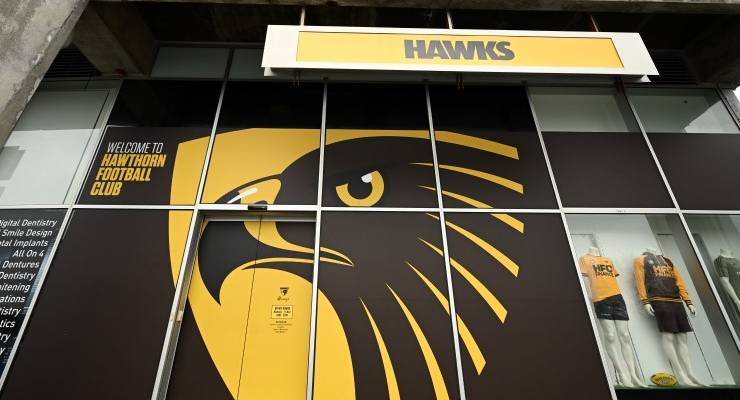
The controversy surrounding the allegations of racism and potential abuse of young footballers at Hawthorn Football Club continues to grow. News Corp has printed a redacted version of Phil Egan’s report and the Nine newspapers have reported that Alastair Clarkson’s allegedly controlling behaviour was not directed at Indigenous players specifically.
Former captain and Clarkson’s replacement as Hawthorn coach, Sam Mitchell, and his partner Lyndall, neither of whom are Indigenous, made similar allegations regarding similar allegedly controlling behaviour.
Meanwhile, the AFL investigation into Egan’s report, which it is understood will involve legally trained investigators reporting to an independent panel of four members, will have the difficult task of assessing what appears to be varying recollections of highly emotional events that happened almost 10 years ago, with a backdrop of constant media reporting and an almost persistent flow of leaked information.
There are multiple concerning elements in the investigation process. Nine’s well-connected former chief football writer Caroline Wilson has reported that “the aggrieved families who gave evidence … were still not over the line as agreeing to the [investigation] process. They all week have been saying they want an independent judicial inquiry … that’s why it’s such a mess — these people gave their evidence [and] are unwilling to do so in an environment they don’t trust.”
Another worrying aspect appeared to be almost accidentally reported by Wilson in her article concerning issues around Hawthorn’s former Indigenous manager, Leon Egan.
In April, Wilson wrote a detailed piece about Egan and his bitter departure from the club. Wilson wrote: “Egan worked for Hawthorn for four years on a temporary basis as the Hawks’ Indigenous liaison officer but … was frustrated and disappointed by the club’s refusal to commit funding beyond his one-day-a-week role. [He] quit the club after the 2015 grand final when he was refused a pass to the Hawks’ post-match premiership celebrations in the MCG dressing rooms, which he described as ‘the final insult for me’.”
Egan told Wilson: “I went into the club a few days later and handed in my resignation. I didn’t want to worry the players about it. I just left.”
While the rest of the football media missed this link, Wilson didn’t, noting this week that Leon Egan is Phil Egan’s cousin, a fact not reported by other media and doesn’t appear to have been included in the redacted version of the report (although Hawthorn officials would presumably have been aware).
There is also concern that Egan’s report appeared to (perhaps inadvertently) extend beyond its “terms of reference”, which were specified as listening and learning from the players’ experiences, understanding support required, and reviewing current procedures.
The report praised the current structures at Hawthorn, noting: “Today’s environment at the HFC is reported by players and researchers to be refreshing and transparent. From the CEO’s office to the football department’s new personnel, well led by an inclusive coach and head of football [and that] all current and recently retired players felt culturally safe at HFC.”
It found that “players and their families may now be ready to bear witness … in search of justice for the trauma and ongoing hurt from such inhumane behaviours forced upon them by the football department”.
It is not merely for the benefit of the alleged victims that the process should be properly conducted, but also for the alleged perpetrators. While Crikey is absolutely not suggesting Phil Egan was in any way biased in his report, the law is more concerned about the perception of bias rather than actual bias.
The problems with the process are compounding: the difficult situation surrounding Leon Egan and the manner of his departure from Hawthorn; the absence of any response from the alleged perpetrators in the report; the extension beyond the original terms of reference; the fact that the report has been so widely leaked.
The story has been fully captured by the media, with almost all basic notions of procedural fairness disregarded. This will give rise to potential causes of action from the likes of Clarkson, as well as his then assistants, (Brisbane coach) Chris Fagan and Jason Burt. It will give them significant ground to challenge potentially adverse findings. The public nature of the process also significantly increases the risk that the anonymous complainants are named.
Last week Crikey’s legal correspondent Michael Bradley took a different view on potential issues surrounding the process, claiming that “if slavish adherence to so-called procedural fairness is part of the problem, then it’s time to change the rules”.
Bradley’s argument appeared to be that Australia’s terrible historic treatment of First Nations peoples meant that the AFL shouldn’t need to strictly follow governance or fairness or due process in this process. While such a view may be justified from a moral perspective, it is unlikely to be overly persuasive in a courtroom.
The allegations raised by the report are distressing and harrowing, but the manner in which the process has been run may very well mean that justice will never be served.








Fair enough, but also concerning is the response of the club’s outgoing chairman and supporters of the individuals accused. They seem to be trying to cast doubt on any of the accusations rather than seek the truth.
More of the ‘why bother with trial and get on with the sentencing’……..?
What ever happened to ‘rush to judgment’ ?